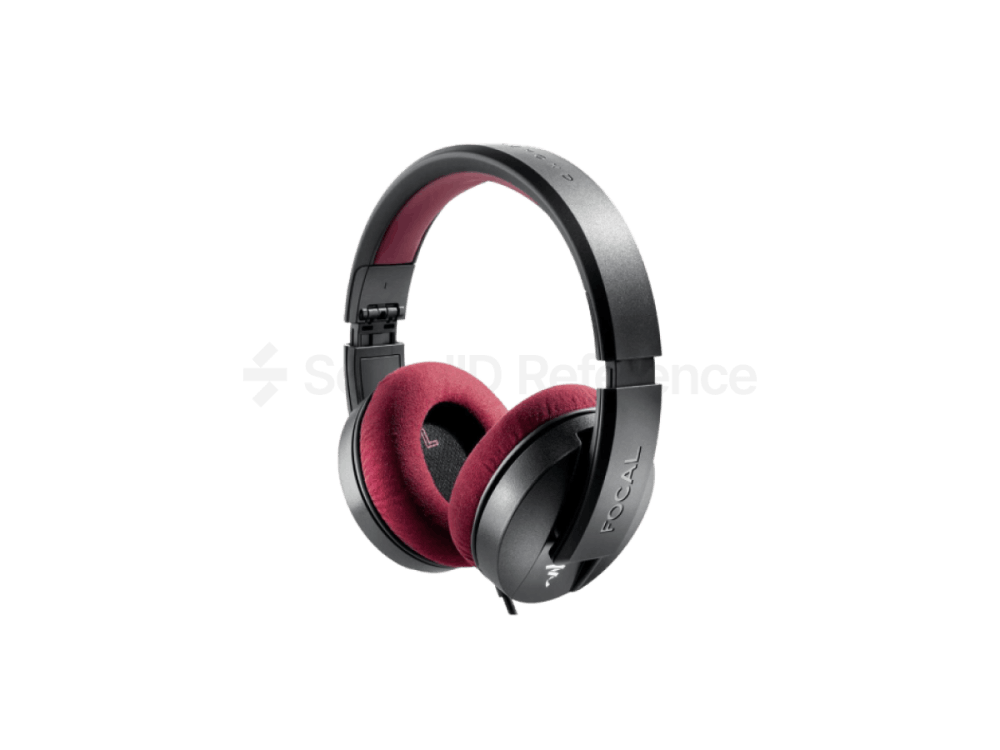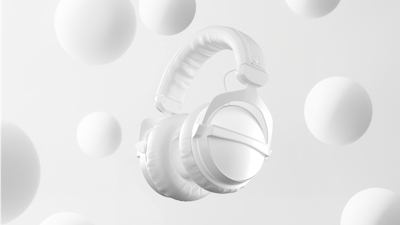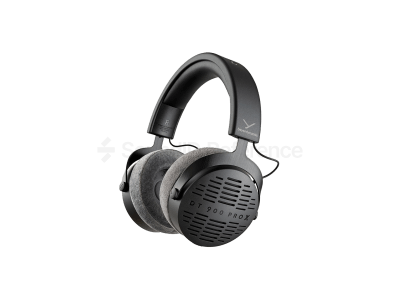The French audio brand Focal is best known in the hi-fi circles for their speakers and in pro audio, they’re also mostly associated with studio monitors. Around 10 years ago Focal released their first professional audio headphones, the Spirit Pro. Price wise it entered the higher-end of closed-back studio headphones, but never made any lasting impact due to questionable choices in headband material and a finicky fit of ear pads. With the release of Elear and Utopia headphones Focal has flexed their know-how in making high-performance headphones, so let’s see if the Listen Pro has something to offer to justify the price point that’s double what’s asked for Beyerdynamic DT 770 Pro.
- Well thought out accessory package
- Good build quality
- Comfy
- Great Adaptiveness
Pros list with SoundID Reference calibration
- Tonally accurate
- Mid coloration makes these unsuitable for critical work
- High bass THD for this price range
The combination of low impedance and high sensitivity means that the Listen Pro is more than suitable even for smartphone headphone outputs. Any decent audio interface will be able to drive them to dangerous SPL’s, so take care with the volume knob. The downside is that high sensitivity will also pick up noise very easily. 32 Ohm load impedance also means that headphone outputs shouldn’t have an output impedance that’s higher than 4 Ohms, or an audible change in the tonality will occur. Check the specs of your interface or amp to see whether it will cause problems.
I’m happy to say that Focal has very much improved upon the older Spirit Pro here. The headband on the Listen Pro uses a flexible plastic that bends without any lasting damage. To aid the headphone’s longevity both the ear pads and cables are replaceable. The only potential failure point would be the ball joint which attaches the earcup to the headband. It’s made out of plastic and might break if too much force is applied. Overall – good job!
Oh my… The W-curve strikes again! Mids are the meat and bones of any mix and the Focal Listen Pro has a +8 dB boost there, thus losing any “pro” credibility here. We could stop here and be done with it, but let’s dive deeper – for educational purposes. The lows also are boosted which will mess with getting kicks and some lower basslines right. Upper mids are scooped, probably to save the listener from that nasty 3 kHz. However that is also where distortion effects happen, so one can forget about getting the right amount of crunch in a mix. Highs are boosted, which gives a false sense of extra detail due to overemphasized overtones. Good luck working on these headphones… because only getting lucky will let you do a right sounding mix.
Not terrible, but not great either. Bass has the most imbalance, which can probably be explained by the single entry cable construction. The cable inlet takes up extra space in the left earcup which makes it less capable in low end. There is a slight imbalance throughout the rest of the spectrum, but it’s only bad when you look at the price of the Listen Pro. There’s a good chance that it won’t lead one’s mixing decision astray.
Again – Focal has done a commendable job here. The Listen Pro doesn’t clamp too hard to be uncomfortable and ear pads are plush with soft memory foam, so no pressure points appear over time. Interestingly enough, the ear pads are on the small side for an over-ear headphone, but that seems to aid with positioning – there’s not much wiggle room, so consistency isn’t bad. People with larger than average ears should try these headphones out, before buying, as for them the Listen Pro might be more on- than over-ear.
The fatal flaw of the Focal Listen Pro is its W-shaped frequency response. There are headphones like the Beyerdynamic DT 770 Pro, Audio-Technica ATH-M50x and Sennheiser HD25-II which all do a better job sound-wise for a lower price. If Focal can fix the tonal response of their headphones, then they might have a real winner on their hands, because the comfort and overall package is very good. When paired with SoundID Reference though, these are among the very best closed-back headphones!
The sub-bass distortion is too high for a 200$ headphone in this day and age. What’s more – the distortion at low frequencies is 3rd order which will be highly audible. Around 3kHz we have two distortion spikes that correlate with irregularities in the frequency response, which means that we’re dealing with resonances here. They are rather narrow bandwidth but will color the sound nonetheless and can’t be calibrated away.
The small ear pads make sure that there’s little room for variation in placing the Listen Pro on one’s ears. These headphones offer exceptional adaptiveness for a closed-back set and in this regard are among the best out there.
How much do they differ pair to pair in terms of frequency response?Consistency is also decent, which is to be expected from a headphone at this price range. Nowadays high consistency isn’t something that’s exclusive only to Sennheiser!
Rating
Conclusion
The good news is that Focal has managed to fix one of the major problems with their Spirit Pro headphone – both comfort and build quality are superb. The sound, however, is pretty sub-par and mid-frequency coloration makes mixing or mastering with the Listen Pro near impossible. These headphones might do the trick for recreational listening, but only if the coloration is something one happens to enjoy. Pair them with calibration though and there’s very little left to complain about!
Final Rating
Calibration Enabled
Calibration







